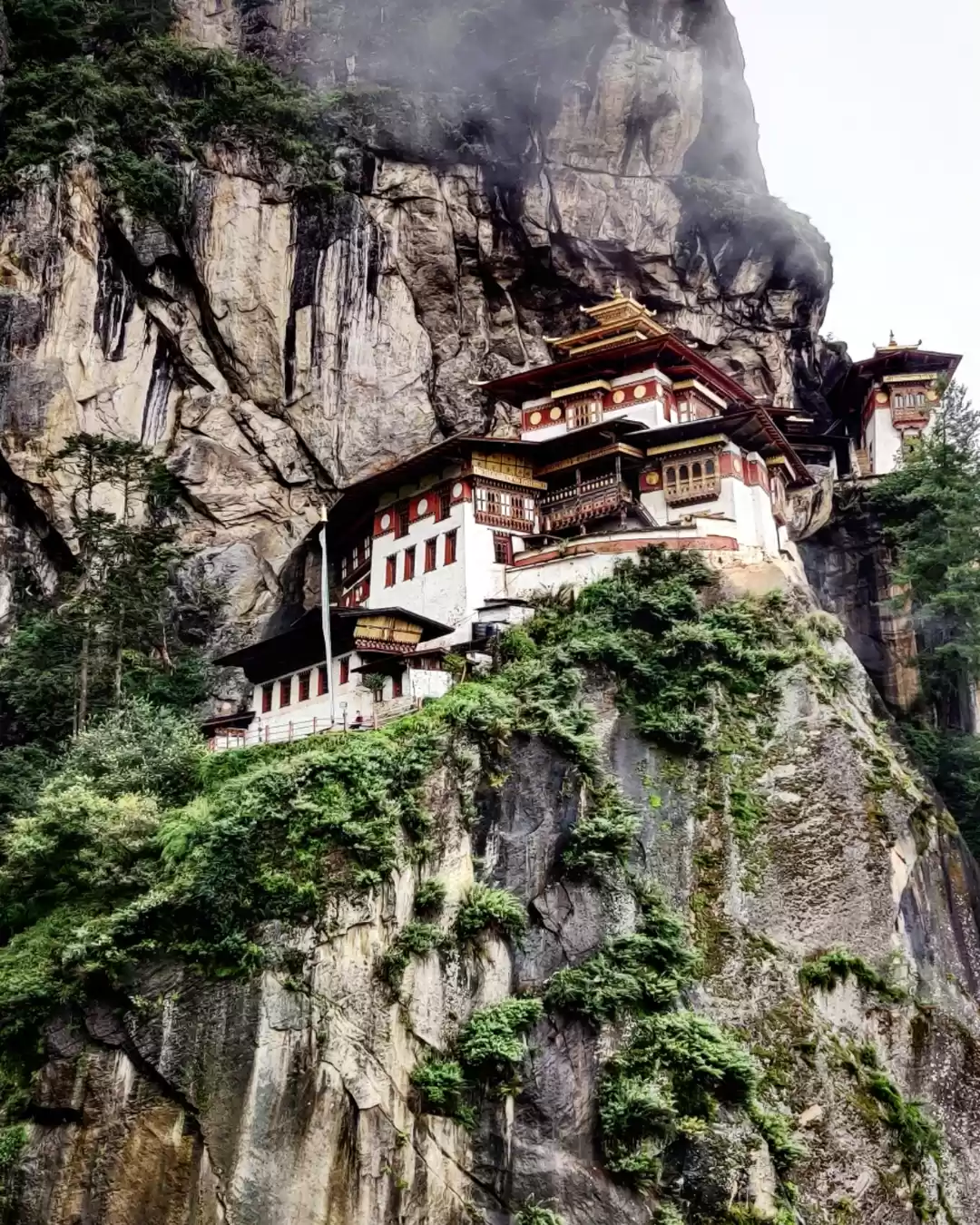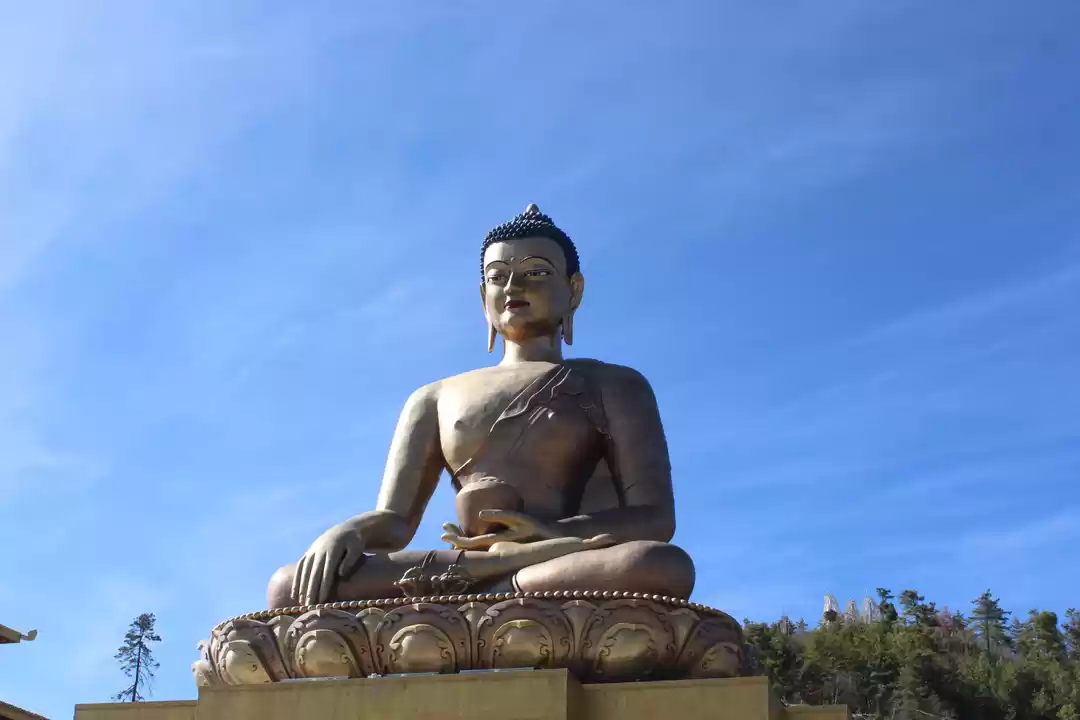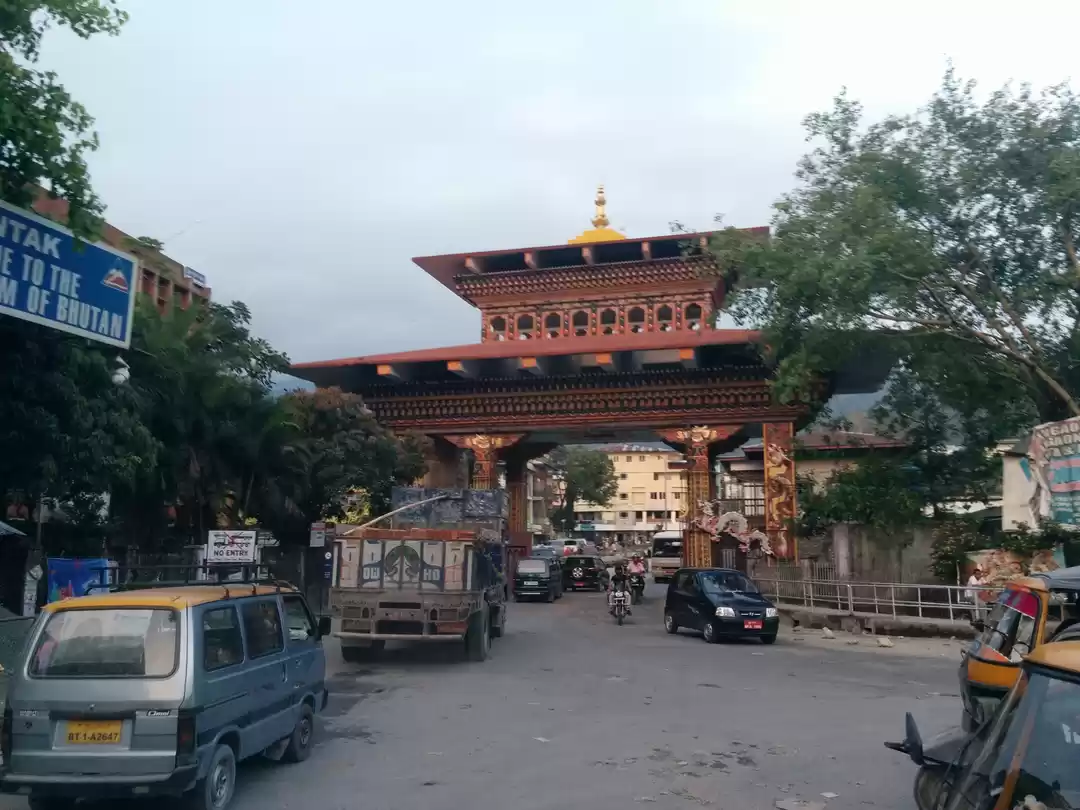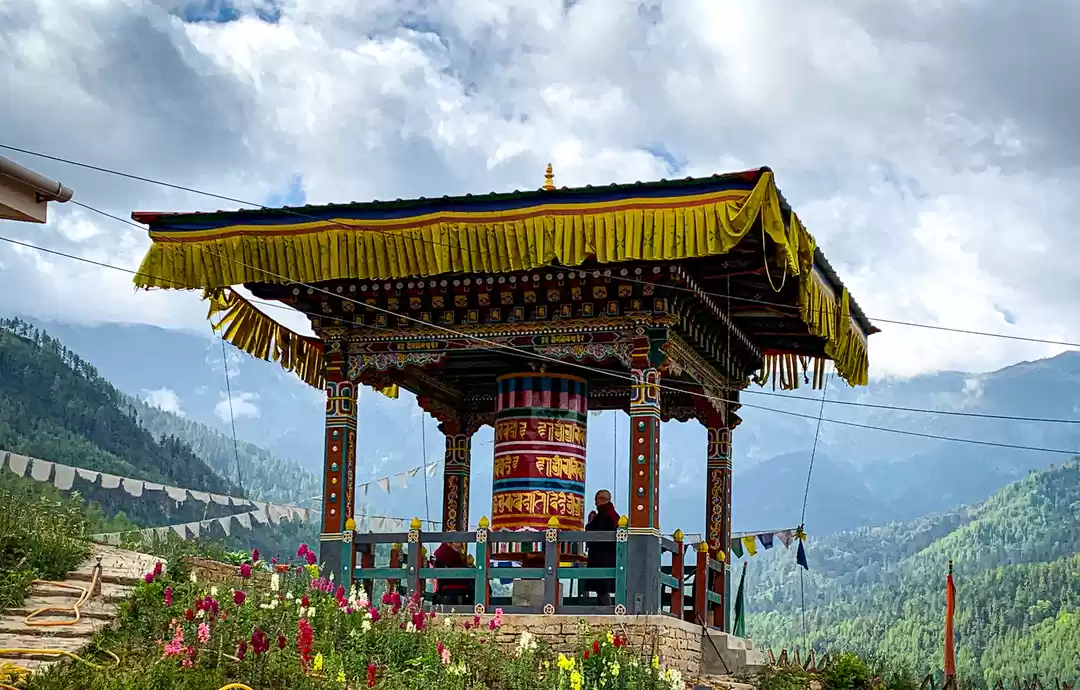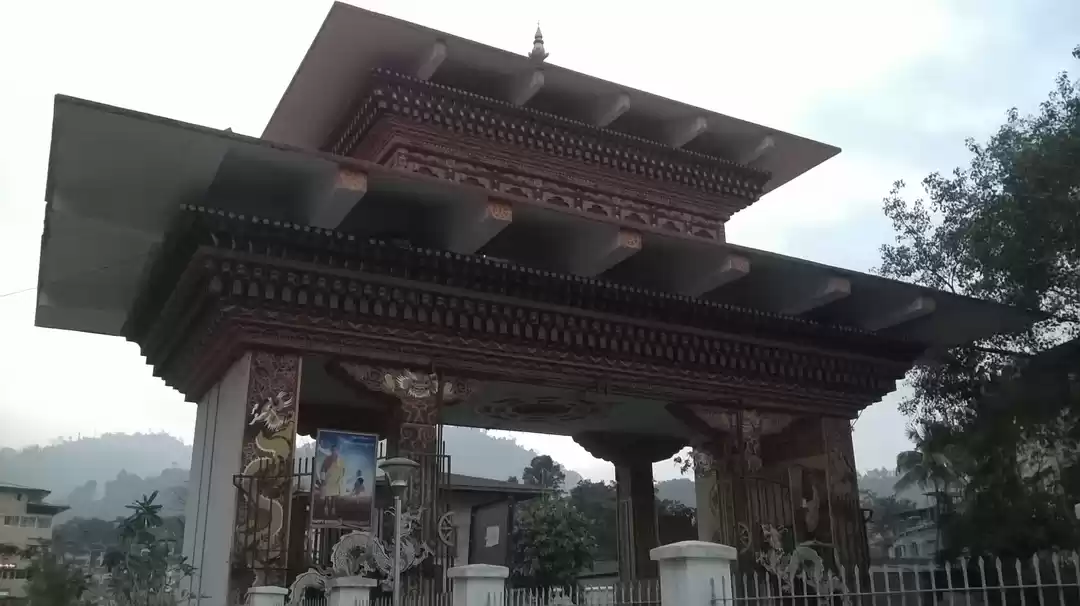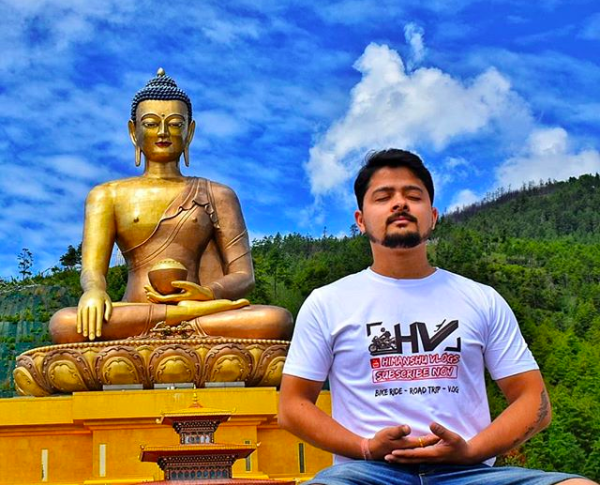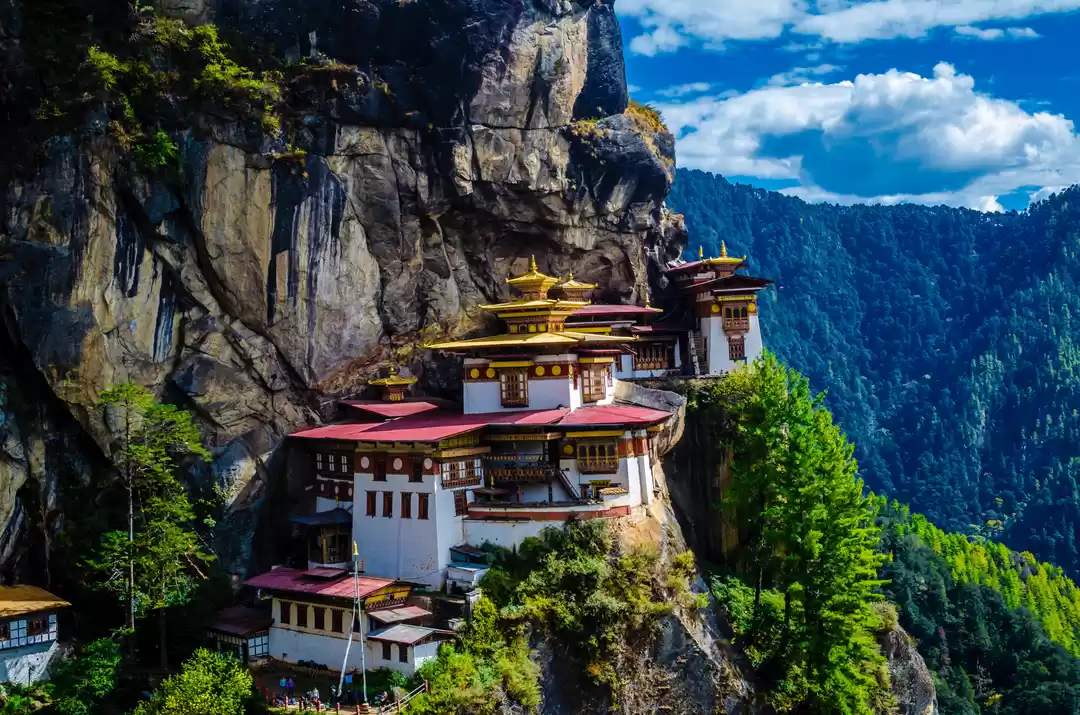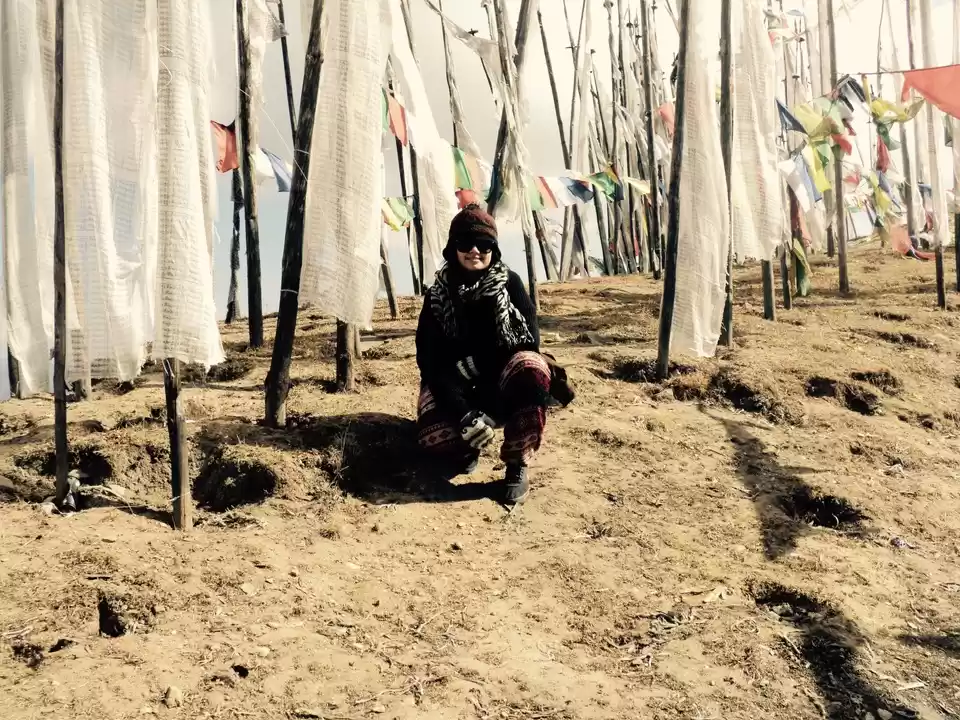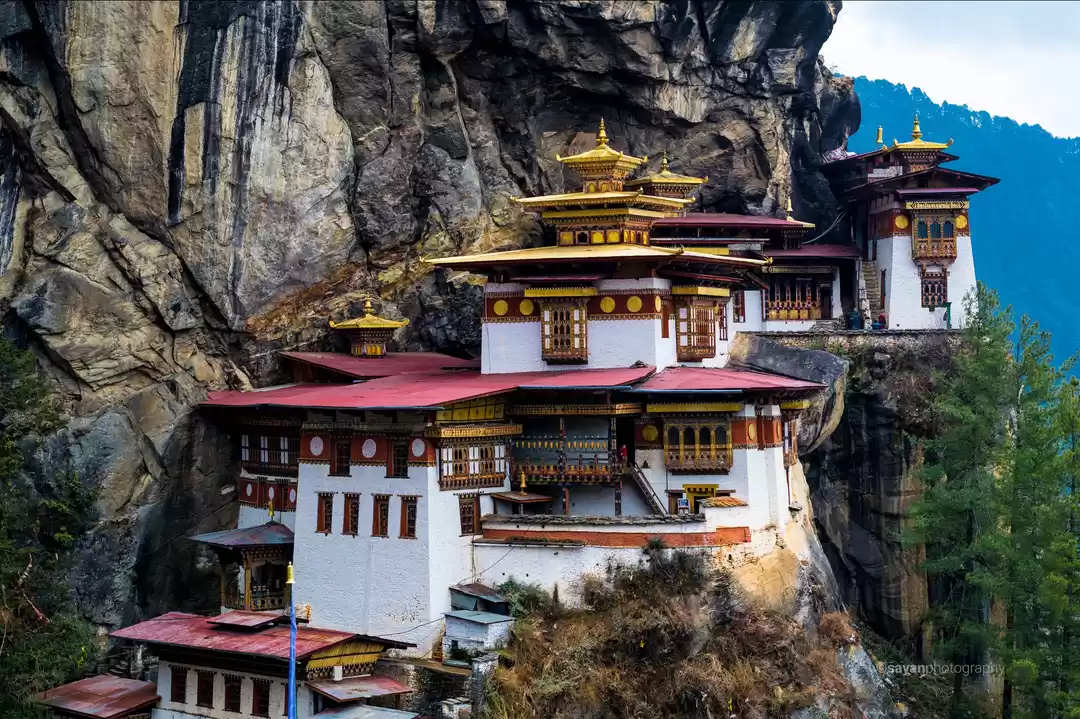I clearly remember, I was ranting to a colleague about how hot it is in Delhi and how I have a dire urge to pack my bags and run to the hills. The very next minute, I received a text from my friend in Pune. She said- “I was thinking we should take a trip to Bhutan”. I could not believe the co incidence. It was an offer at the perfect moment and my immediate response was - “We need to plan our trip!”

I had heard a lot Bhutan- the Buddhist Kingdom. This little country had caught my fancy for a long time. How does a country not be too concerned about the GDP and focus more on the Happiness quotient? In this day and age, what is the secret to a country with 70% forest cover? Do they have a king and queen running the country just like in the olden days? Will it be a time travel? These were few of the questions I was seeking answers for.
We choose to explore the country in the end of September.

The easiest way to reach Bhutan is to take a direct flight from Delhi to Paro. Bhutan has monopolized air travel with only two native airlines operating on its soil. This makes air travel to and from Bhutan a tad bit expensive. As cost conscious travellers, we wanted to save money. Letting go of a direct flight to Paro was an easy decision. Besides, road journeys are so enticing and we did not want to miss the breath taking landscapes both in India and in Bhutan. Don’t you think, crossing the national border by road has its own charm?
The only thing we wanted to pre book was our flights and hotels. A detailed itinerary for each day has never been our idea of travel. On day one we took a two hour flight from Delhi to Bagdogra,West Bengal, and helped ourselves with a sumptuous lunch somewhere near the airport. Small outlets with local food were our priority throughout the trip! They serve the most authentic food prepared with locally sourced ingredients. One can tell a lot about the way of life of a geographic location with the kind of food consumed by the locals.
The five hours’ drive from Bagdogra to the border town of Bhutan, phuentsholing was beautiful. We got a glimpse of the mighty Teesta river and the drive was mostly through tea gardens.On our arrival at phuentsholing, We headed straight to the immigration office, unaware of the surprises we were in for. The immigration office was closed. Yes, closed. We did not know what to do. Little did we know that as soon as we cross the Indian border, our adventures will begin!
Bhutan was closed for the ‘Blessed Rainy Day’ a day earlier than scheduled. Blessed Rainy Day is a holiday marking the end of the monsoon season in Bhutan. This gave me a sense of how Bhutan’s culture and traditions are deeply rooted in nature preservation and worship. Throughout the trip, I noticed that all the mystical stories , folklores and fables of Bhutan more or less revolve around nature, its mighty miracles.
We were in phuentsholing for a day and had to make the most of it(One can stay in phuentsholing without the Immigration documents). It was actually a good thing because we got all the time to laze around and interact with the locals.
We learnt that there is a Gharial conservation center nearby. Of course we had to visit! This conservation center essentially provided a safe breeding ground for the crocodiles and alligators. It was a wonderful experience watching these magnificent creatures so closely. Artificial lakes were created for the reptiles and there was minimal external disturbance.


After this wonderful surprise we treated ourselves to a satisfying oriental lunch along with the local wines. My travel Mantra – Where ever you go, never forget to try the local wines. Both, Takin, the local red wine and Zumzin, the local peach wine were delicious and we decided to take a few bottles back home. In the evening, we went to a local bar and realized that the Bhutanese love Bollywood and Shah Rukh Khan, just like we do. So much for being a neighboring country eh!
After an unexpected pleasant halt in phuentsholing,the next day, we completed our immigration formalities and were ready to travel to Thimpu, the capital city. The drive from phuentsholing to Thimpu is exhilarating. The well maintained roads cutting through dense forests overlooking the mountains is something which should not be missed. The sight of the setting sun deserves a special mention.

As we entered Thimpu, we noticed there were no traffic signals! Thimpu is the only capital in the world with no traffic signals. Why you ask? Simply because they don’t need them. The traffic is scanty and disciplined. Drivers acknowledge each other and are conscious of their responsibilities. By the time we reached, it was already eight pm and pitch dark. We decided to park ourselves at a comfortable hotel for a good night’s sleep. The next day we enjoyed a fulfilling breakfast at the Hotel after which it was time to visit the Trashichoe Dzong. This massive fortress houses the King’s office, government departments and the residence cum work place of the chief Abbot.


Bhutan’s cultural is deeply rooted in its religious traditions. The powers of the government of Bhutan are split between the religious branch and the administrative branch. The Chief Abbot is a big influence on decisions taken by the supreme monarch of the country.
After exploring the fortress, we were hungry and were looking forward to learn more about Bhutan through its food. This called for an authentic Bhutanese lunch. Luckily we found a place serving Bhutanese meals and the décor of the place spoke of the culture and traditions of the land. Even the style of serving food in wooden utensils by servers clad in the traditional dresses was quintessentially Bhutanese. Let me write about the food now. **As I think of the menu, my mouth already starts to water**. The food was simply delicious and so healthy(Mental note: find a Bhutanese restaurant in Delhi)!The meal comprised of smoked pork, chicken, variety of greens, red rice, and to digest it all we were served hot butter tea. . The highlight of the meal was Ema Datshi or Chilli cheese. It is a no brainer that we were delighted to no bounds! Rest of the day was spent strolling around the city and planning for the following day.
Next day we decided to visit Kuenselphordang complex (in Thimpu) to witness the 169 ft sitting Gautam Buddha statue. The complex is situated on a hilltop overlooking the Thimpu city valley which is along the Thimpu River.

This majestic statue is built of bronze and is gold plated. Even the smaller statues around the main statue are built of bronze and gold plated. Kuenselphordang was built to celebrate the 60th anniversary of fourth king Jigme Singye Wangchuck. According to the locals, over a billion dollars have been spent to construct the whole complex which is still under construction and all the money has been collected in form of donations from the people of the country. For me the highlight of the whole complex was of course the grand statue but also the meditation hall located at the base of the statue. Unfortunately, the hall was still under construction and not open to visitors. Maybe I will have to wait until my next visit to meditate in the hall.
Next up on our agenda was to visit the Takin Zoo to see the very unique nation animal of Bhutan- Takin. Takin is a cross breed of a goat and an antelope and is found in the eastern Himalayan ranges at altitudes between 1,000 and 4,500 m above sea level. These peaceful animals are fast disappearing and are listed as vulnerable in the IUCN red list. This Zoo was unlike any Zoo we have visited in India. There was a huge enclosure (almost covering the entire zoo leaving a little space for people to walk) and the animals could move freely without any space constraint. We spent a good amount of time at the zoo and left only in the evening.


The next morning it was time to drive to Paro. Only 50 kms away from Thimpu, it took us barely 3 hours to reach our hotel in Paro.
Paro is where the international airport of Bhutan is located. Naturally, it is more of a ‘touristy’ town than Thimpu. The city built around the Paro River, needless to say, is abundant with nature and scenic beauty. One can easily laze around the city and feel enriched. However, we had a to-do list. First on the list was to visit the oldest Buddhist house of worship in Bhutan, the Kyichu Lhakhang. Built by the Tibetan king Songtsen Gampo in the 7th century. The legends say that the temple is one of 108 temples that were built to defeat an ogress (demon) that was lying over the entire Himalayas. Most monasteries and other significant places of Bhutan have interesting transcendental stories and parables. A local tour guide will always have so many magical stories to tell you. The monastery was a very quiet place and people were in serious prayers. After the temple we went to the market and did some shopping which consisted of home décor, antique jewellery and kilos of red rice to name a few .

The next day was something I was looking forward to with the excitement of a child. Trek to the Taktsang Palphug Monastery or the Tiger’s nest. This is a temple complex built in 1692 by Guru Rinpoche. Guru Rinpoche, also known as the second Buddha introduced tantric Buddhism in Bhutan. It is believed that he flew to this location from Tibet on the back of a tigress and meditated in a cave, now popularly known as tigers nest. The uphill trek was for about two and a half hours. I would say it is of medium difficulty. We were relieved to have no direct sunlight throughout our trek. The monastery was peaceful and had a huge statue of the Guru Rinpoche along with the statues of his wives on either side. While trekking downhill, it started drizzling and we enjoyed every bit of the muddy slippery journey back to the base.


This was the last leg of our exciting and fabulous vacation. We could only do Paro, Thimpu and phuentsholing due to time constraint. However, there are other wonderful places to visit such as Punakha and inspiring activities to undertake such as the Snowman’s Trek.
In conclusion, I would just like to say that Bhutan is a must visit country in South Asia. It is better to go through a tour guide to sort out your immigration than to do it by yourself. Having said that, it is worth spending about a week discovering and unraveling Bhutan.

Towards the end of our trip, we were happy to have familiarized ourselves with Bhutan and have gained so many wonderful memories.
Trip Photographer,Travel Partner and a dear friend – Ekanki Vashisht
Frequent searches leading to this page:-
top Bhutan tour packages with price, Bhutan tour packages from Delhi with airfare, Bhutan tourism packages, top things to do in Bhutan, adventure activities in Bhutan, adventure activities in Bhutan


















